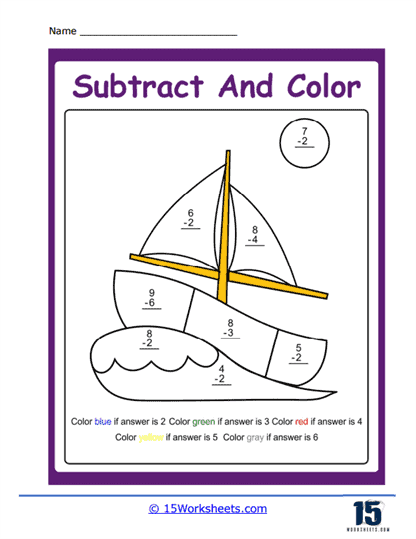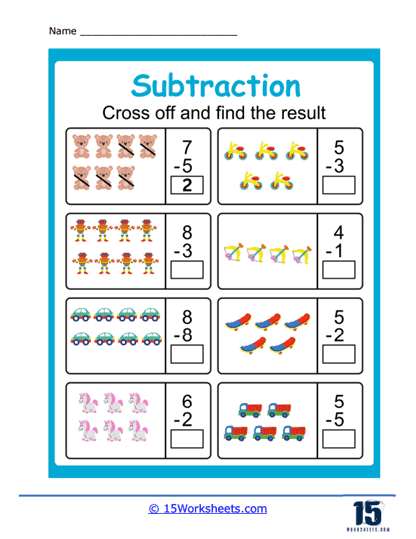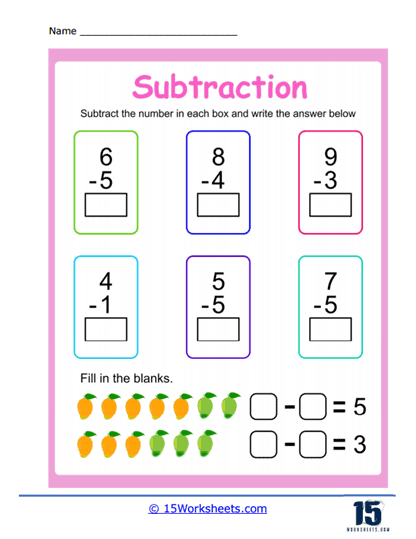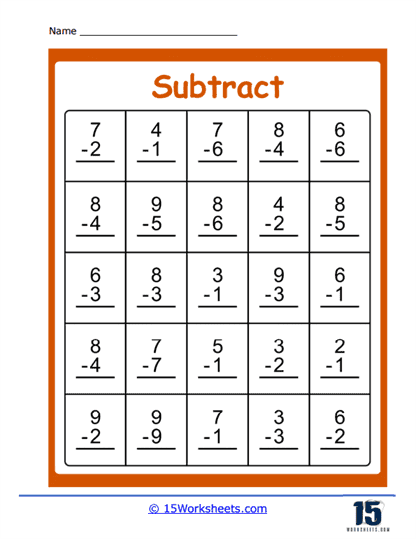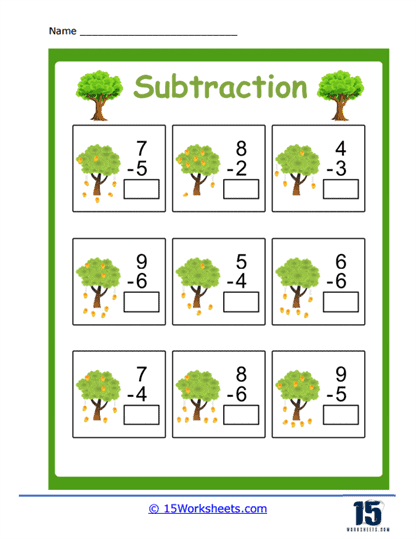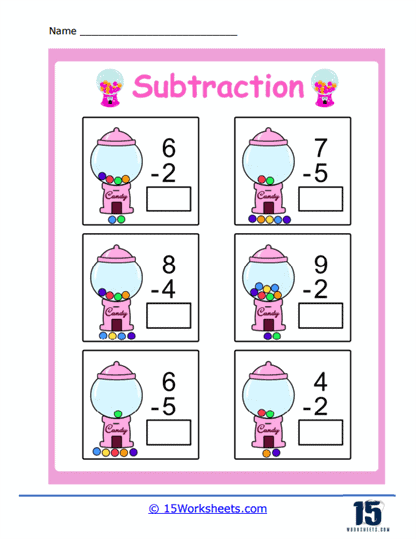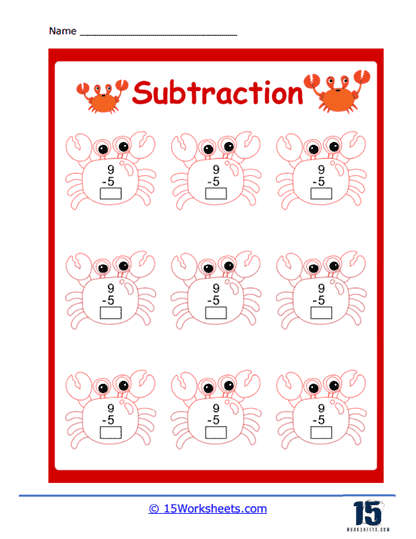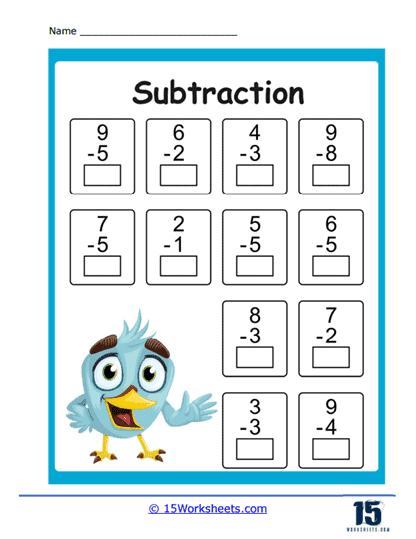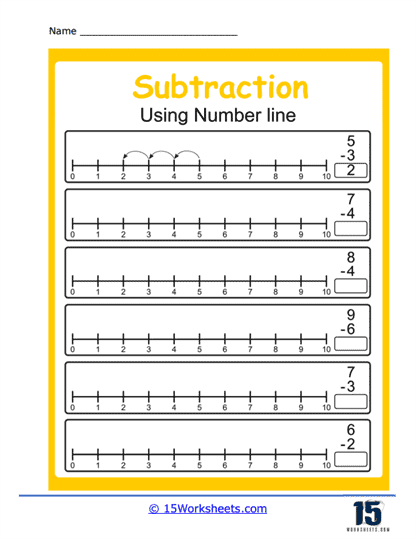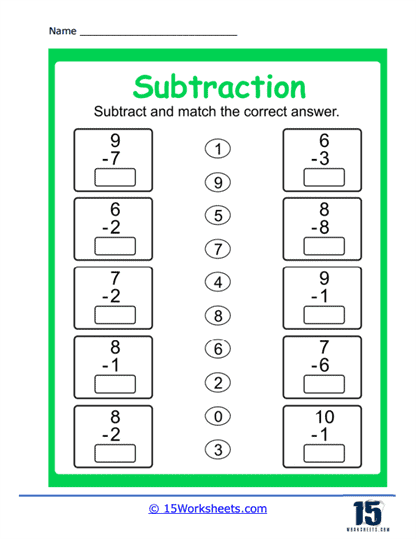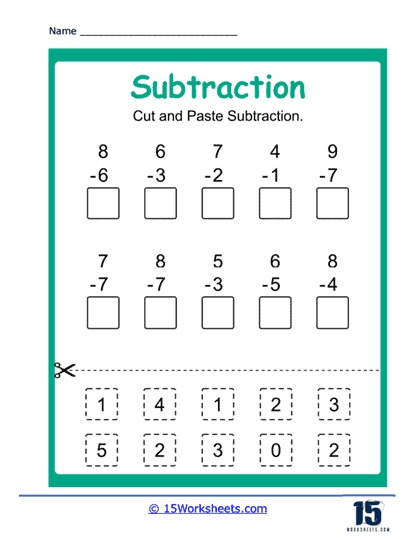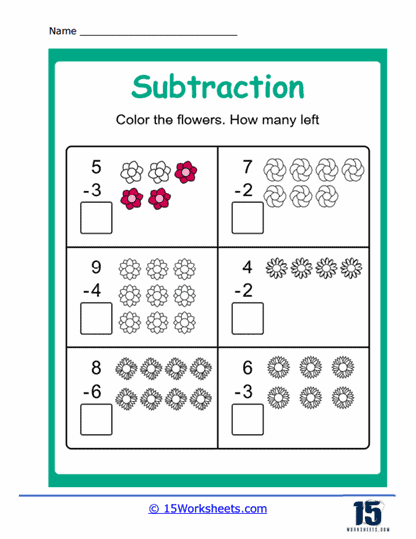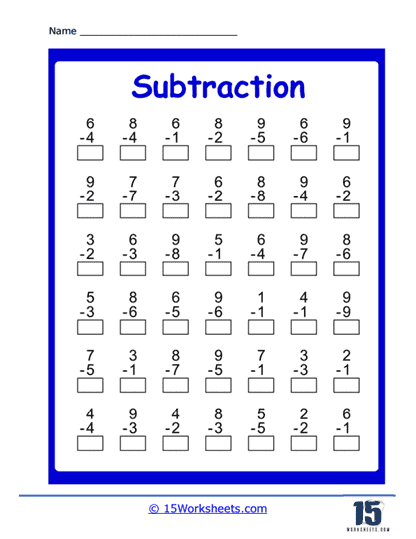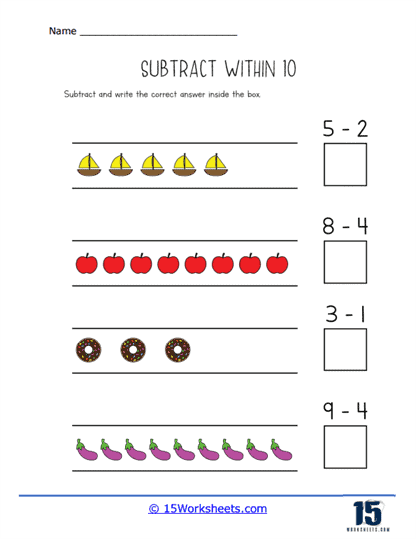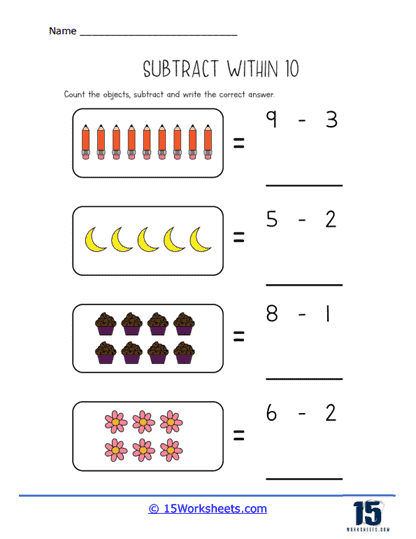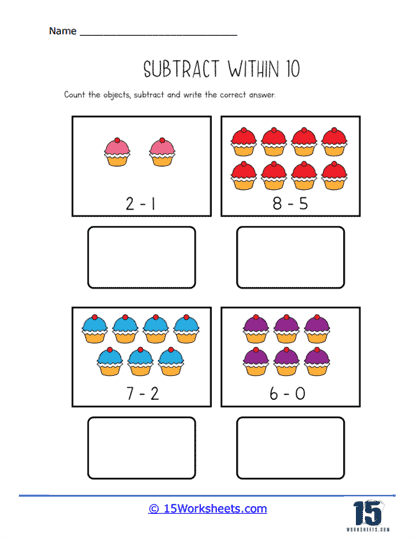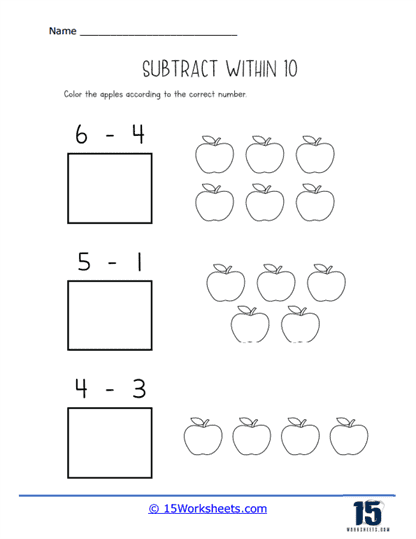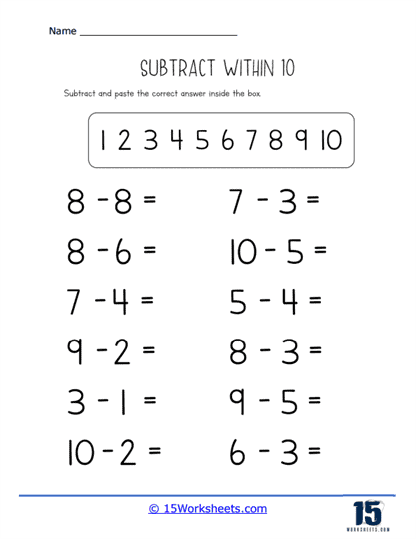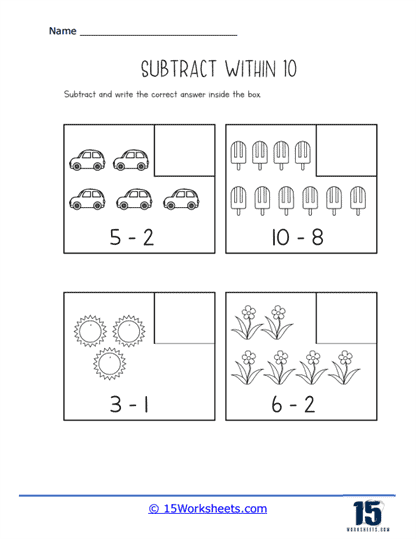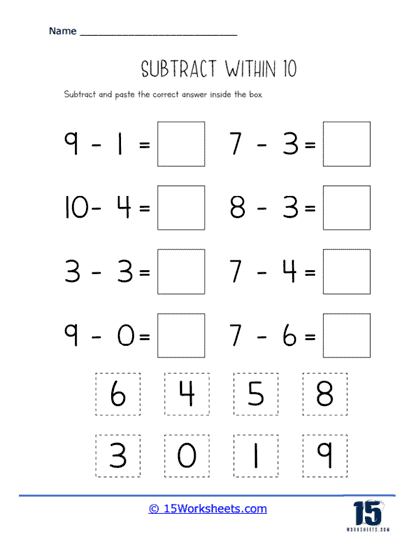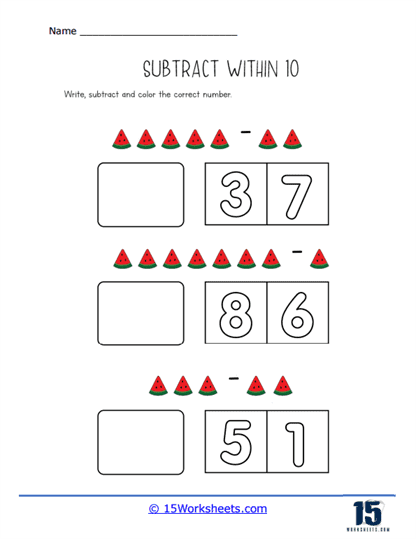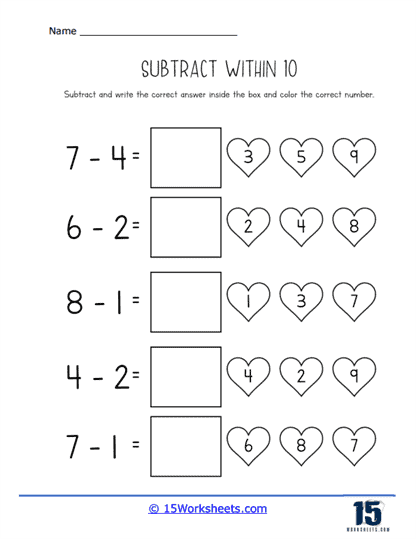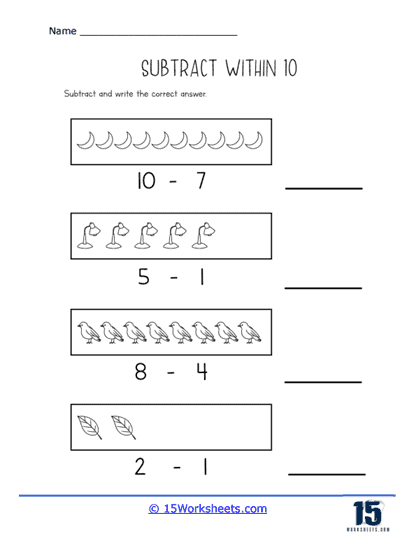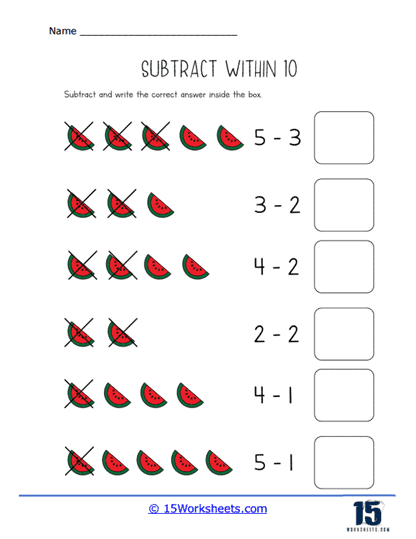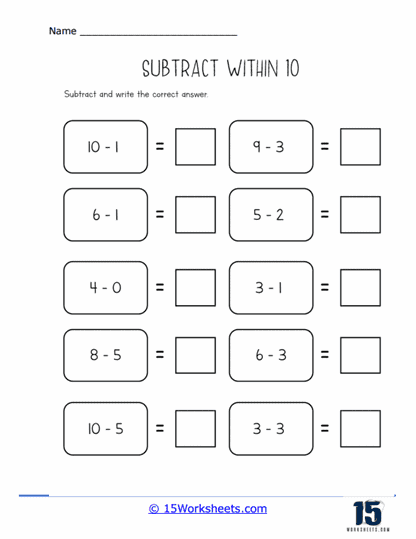Subtract Within 10 Worksheets
About These 15 Worksheets
These are worksheets that are filled with subtraction problems where the minuend, subtrahend, and difference are always a value of 10 or less. These worksheets help you become a math wizard in handling differences that involve numbers up to 10.
Types of Problems on These Worksheets
Simple Subtraction – In this type of problem, you’ll practice subtracting one small number from another. For example, 7 – 3 or 9 – 2. These problems are like building blocks for your number skills, helping you understand how numbers work together. These problems lay the foundation for understanding subtraction. You’ll learn how to take away one number from another and make sense of the numbers’ relationship.
Counting Back – Sometimes, instead of using your fingers, you can count back to find the answer. Imagine 6 – 4. You can start at 6 and count back 4 steps to reach 2. This type of problem helps you become a quick thinker and improve your mental math. Counting back teaches you to think quickly and subtract in your head. It’s like a mental workout that makes your brain stronger.
Using Number Line – A number line is like a ladder of numbers. It helps you visualize subtraction. For instance, to solve 8 – 5, you start at 8 on the number line and count back 5 steps to reach 3. This problem type makes subtraction feel like a fun adventure on a number trail. Learning to use a number line helps you visualize subtraction as a journey on a number path. It’s like taking a walk through numbers to find the answer.
Missing Numbers – In these problems, you’ll need to find the missing number in a subtraction sentence. For example, in 9 – ___ = 6, you’ll discover that the missing number is 3. Solving these problems sharpens your detective skills and makes you a master of numbers. Solving problems with missing numbers boosts your problem-solving skills. You’ll learn how to complete a puzzle by figuring out the missing piece.
Picture Subtraction – Sometimes, pictures can help you understand math better. Imagine you have 5 apples and you eat 2. Drawing 5 apples and crossing out 2 helps you visualize the subtraction process. Drawing and crossing out pictures helps you understand math visually. It’s like having a magical drawing board that makes numbers come to life.
The Differences Between Vertical and Horizontal Subtraction
Vertical and horizontal subtraction refer to two methods for writing out and solving subtraction problems. Both methods yield the same results when done correctly, but they are laid out differently on paper.
Vertical Subtraction
The numbers are written vertically, one on top of the other. The number from which another number is to be subtracted (minuend) is on the top, and the number to be subtracted (subtrahend) is directly below it. You start subtracting from the rightmost digit (units place) and move to the left.
If borrowing is necessary (when the top number in a column is smaller than the bottom number), you “borrow” from the next left column. This is the method most often taught in elementary school for multi-digit subtraction.
725 (minuend)
– 586 (subtrahend)
______
139 (difference)
Horizontal Subtraction
The numbers are written horizontally, side by side. The operation symbol (minus sign) is placed before the subtrahend.
While this method can be used for simple, single-digit or mental calculations, it becomes less convenient for multi-digit subtraction because it doesn’t provide a clear structure for borrowing.
725 (minuend) – 586 (subtrahend) = 139 (difference)
Most students and adults prefer the vertical method for multi-digit subtraction because it provides a clear framework for handling borrowing. However, horizontal subtraction might be used in quick, mental arithmetic or when dealing with simpler problems.
Tips For Working On Single Digit Subtraction Skills
Sometimes, using real things like blocks or beads can make learning subtraction easier. Let’s say you’re thinking about “7 minus 3”. Start with 7 beads, and take 3 away. See how many you have left? That’s your answer!
Another fun way is using a number line. Imagine you’re on a mini-adventure. If you’re trying to solve “6 – 4”, start your journey at number 6 and hop back 4 spaces. The number you land on is your answer!
Have you tried flashcards? They’re like mini quiz cards! You can also play math games on the computer or with friends. These games are like secret math lessons because you’re learning while having fun. Sometimes, listening to catchy math songs can help too. They’re fun to sing and can help you remember subtraction facts.
Also, drawing can be a big helper. Let’s say you’re thinking of “8 – 5”. Draw 8 circles, and cross out 5. The circles that aren’t crossed out? That’s your answer! And guess what? Sometimes, teaching a friend can help you understand better. It’s like being a mini teacher!


